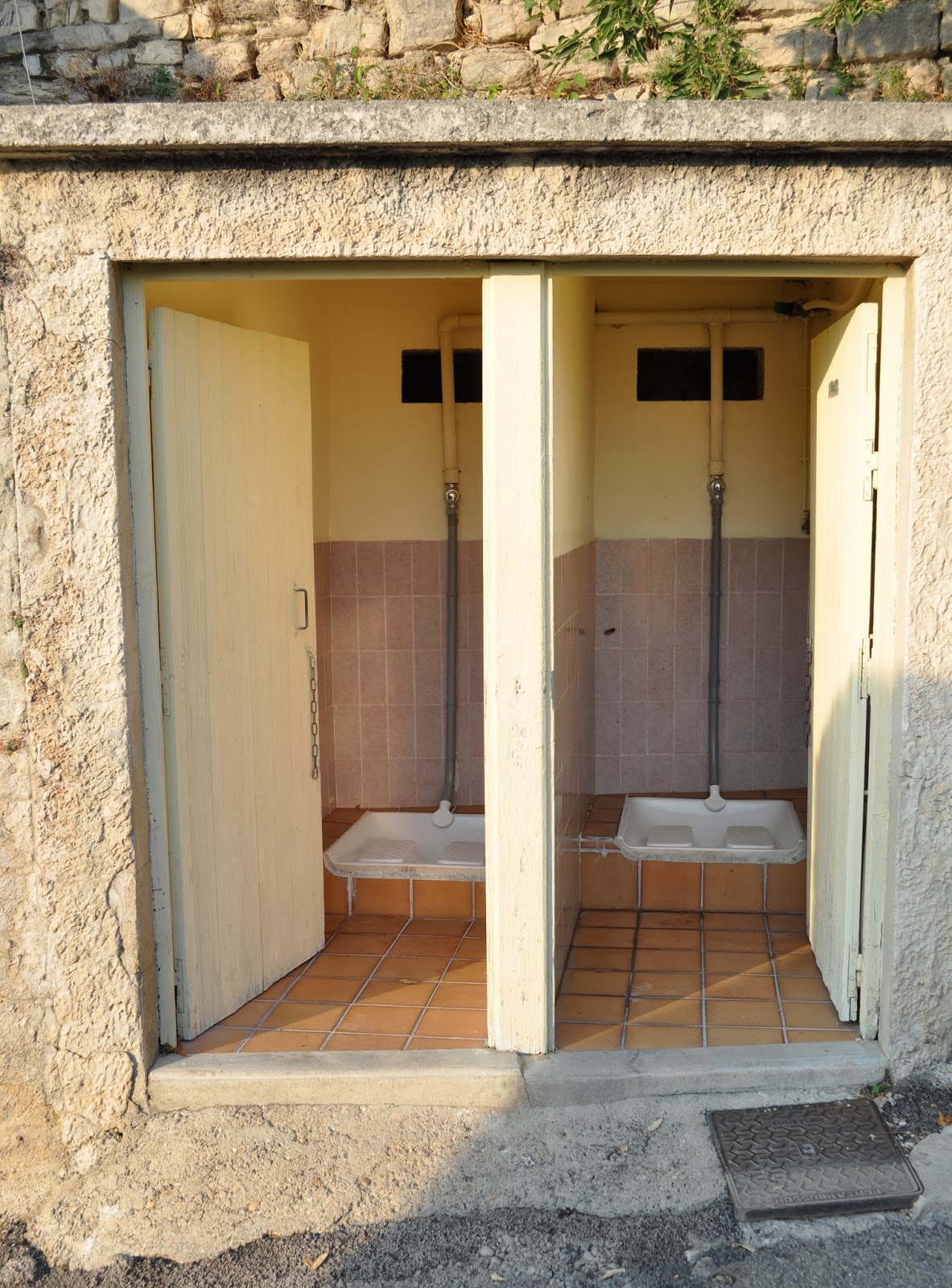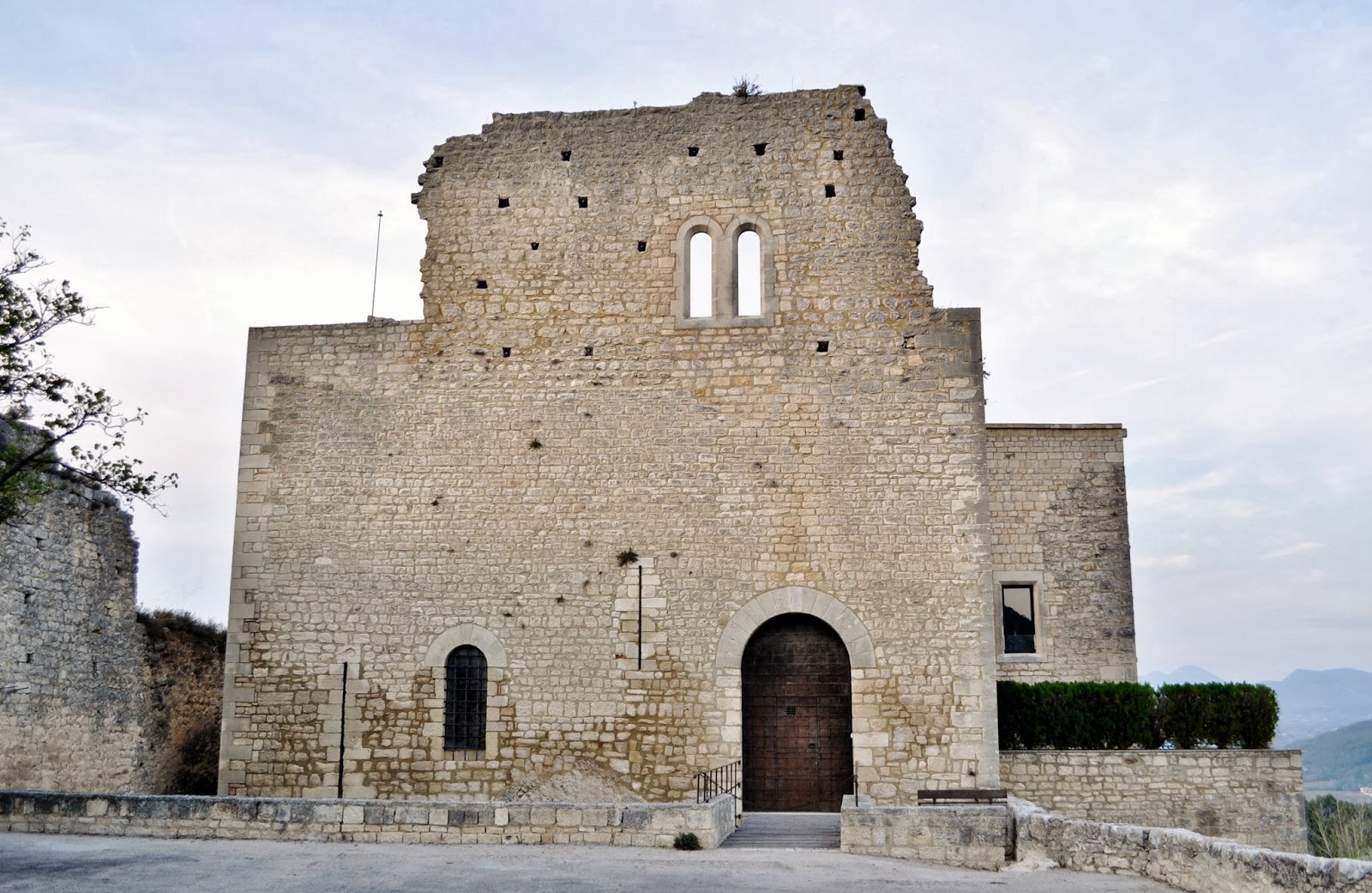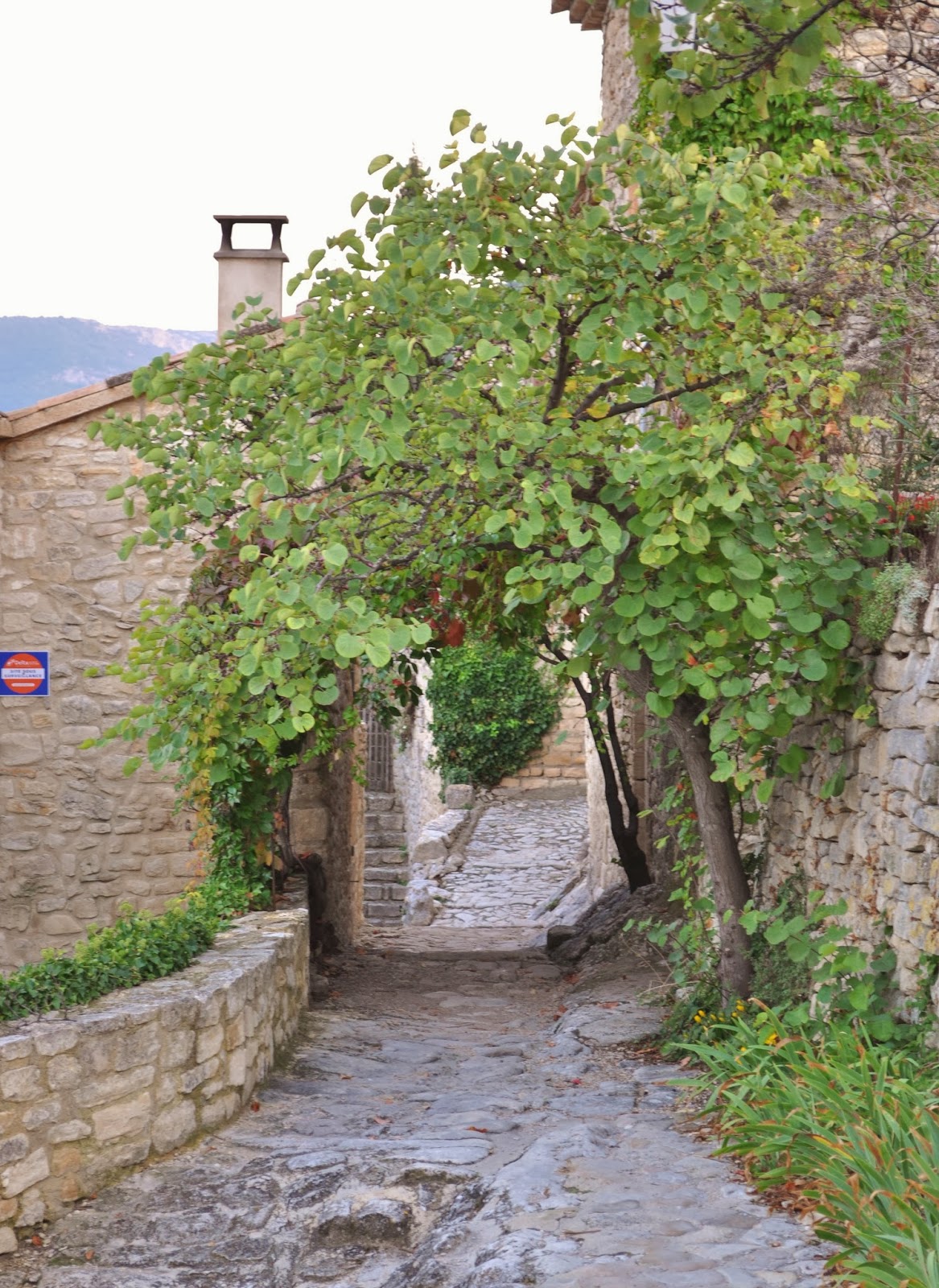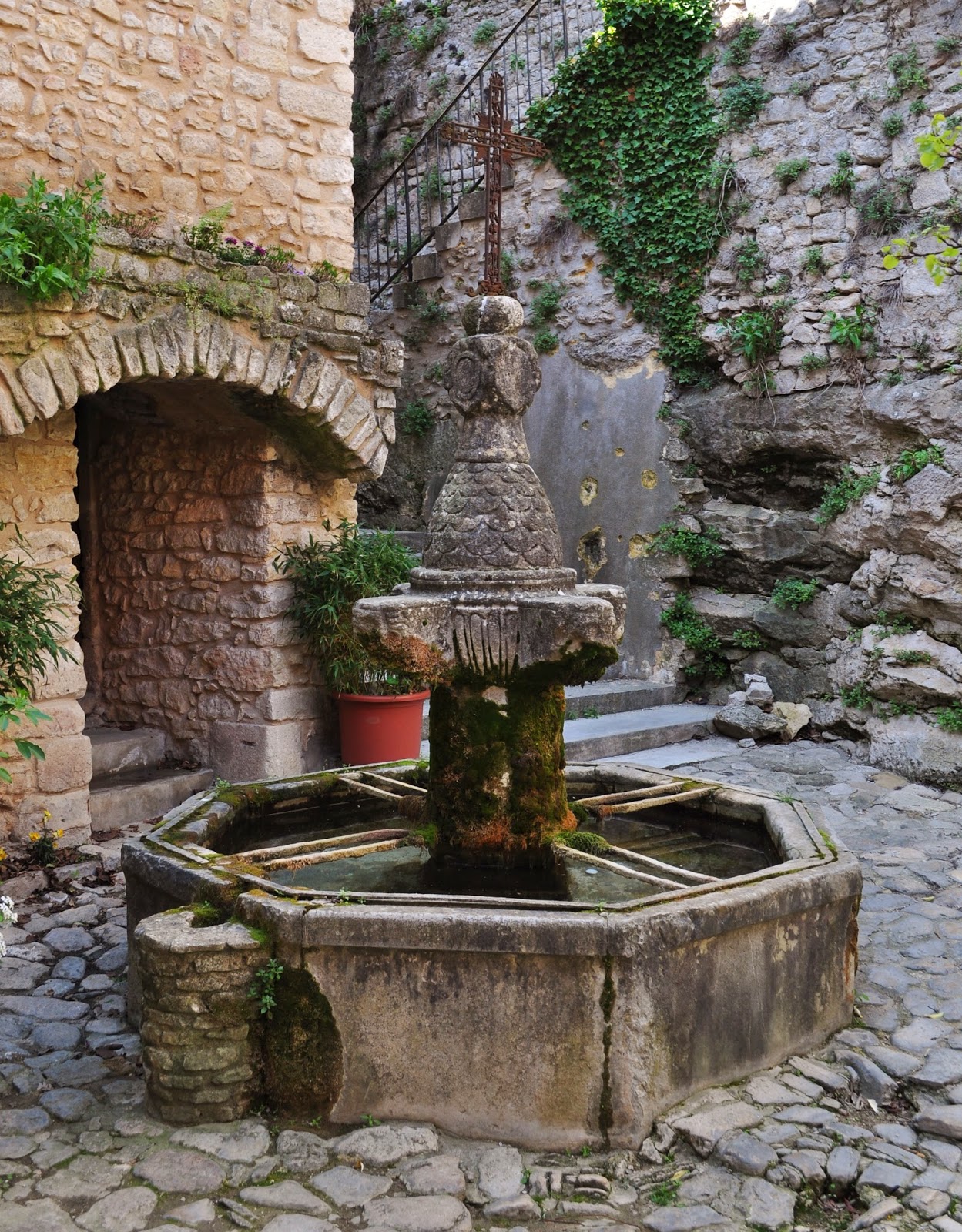It might seem like our day trips take us a long way from Sablet, the village we call home in Provence, but that is not the case at all. Most day trips are are less than one hour drive and quite a few take just a few minutes.
One of the most scenic trips is the 62 km "
Route des Vin" (wine road) that goes around the Dentelles de Montmirail with stops to visit one or more of the pretty wine-making villages along the way. The Dentelles de Montmirail are short, steep mountains with a distinctive rocky ridge extending west geologically from Mont Ventoux which is located just to the east.
The name Dentelles, the French word for lace, refers to the jagged, rocky tops obtained by erosion, while Montmirail is derived from the Latin mons mirabilis meaning "admirable mountain" though the alternative connection with teeth, "dents" in French is equally good in my opinion.
The Dentelles de Montmirail mountain range is about 8 km (5 miles) long and runs from Vaison-la-Romaine on the north end to Beaumes-de-Venise on the south. The tallest peak of the Dentelles de Montmirail range is St-Amand, at 734 m (2,400 ft).
 |
| View toward the Dentelles de Montmirail with Sablet in the foreground |
As you know, we live in Sablet, which we think is one of the prettiest villages along the Dentelles de Montmirail wine road. You can check out Sablet
here,
here and
here.
 |
| Sablet |
Next door to Sablet is Séguret, a small village elevated above the vineyards that separate Sablet from Séguret and wraps around the bottom of a steep hill topped by ruins of its medieval castle.
We go often to Séguret, sometimes on foot through the vineyards up to Séguret then through the pretty village before heading back to Sablet on the connecting road. Séguret is classified as a "most beautiful village of France" and is most deserving of this honor.
 |
| Séguret |
When you get to Séguret, you will have to park in one of the parking areas just below the village as Séguret is accessible only on foot. From the parking lot, walk up the hill and enter the village through the arched portal of the old wall around Séguret to the main street.
The small central square of Séguret has a 14th-century stone bell tower with a 17th-century belfry and a single-hand clock dating from 1680. On this same square is a lavoir built in 1846 and the 17th-century fountain with its four stone faces.
 |
| Shirley and friends at the fountain in the center of Séguret |
The village of Séguret is long and narrow with cobblestone streets and rough stone walls.
 |
| Cobblestone street in Séguret |
Séguret has a number of tourist-oriented shops along Rue des Poternes including several art galleries and santonniers. In case you don't know, santonniers are makers of hand-painted terracotta nativity scene figurines produced in Provence that I told you about
here.
 |
| Rue des Poternes in Séguret |
The Huguenots' gate which still has its two iron bound wooden shutters.
 |
| Séguret's Huguenots' gate |
Below you can see one of the village lavoirs near the Huguenot's gate; lavoirs are a public place set aside for washing clothes.
 |
| A Séguret lavoir |
As you exit Séguret, you will pass the public toilet facilities. Let's just say that public toilets in France are a mixed bag of good and bad and we recommend ladies, that you carry toilet paper in your purse as you travel about. Toilets deserve a post of their own and someday I will tackle this topic as a public service.
 |
| Public toilets |
Fourteen km on the wine road around the Dentelles de Montmirail we come to the tiny village of Crestet. It is perched on a crest at the northern edge of the Dentelles de Montmirail facing Mont Ventoux.
 |
| Crestet |
Drive up the narrow winding road, in some places more like a path, up to the medieval castle sitting atop Crestet where there is a spectacular view towards Mont Ventoux.
The castle is one of the oldest castles in Provence. It was renovated and enlarged in the 14th century and for a while the bishops of Vaison-la-Romaine resided there. What remained of the castle was restored in 1984. It is now privately owned and not open to the public.
 |
| Crestet castle |
The village is tiny, population 434. From the castle, you head down the narrow cobblestone street into the center of the village. You will enter into a medieval world with old stone houses, narrow alleys, arches and cul-de-sacs. Beware, none of the streets are flat.
 |
| Narrow cobblestone street in Crestet |
 |
| The steeple of Saint-Sauveur-et-Saint-Sixte church |
 |
| Cobblestone stairway |
 |
| One of many stone structures in Crestet |
 |
| A statue along the path |
 |
| Steep narrow cobblestone street in Crestet |
 |
| All the streets are cobblestone and barely wide enough for two people |
The construction of the village church began in 890. Three chapels were added successively in 1380, 1495, and 1563. It wasn't until 1760, that the church was dedicated to Saint-Sauveur.
 |
| Saint-Sauveur-et-Saint-Sixte church in Crestet |
The beautiful fountain seen below is in the center of Crestet near the village church. It was built in 1843.
 |
| Crestet fountain near village church |
 |
| Cobblestone steps and archway in Crestet |
 |
| Village lavoir |
The Annonciade chapel seen below was built in 1545.
 |
| Annonciade chapel |
 |
| Old stone well in Crestet |
 |
| Cross against backdrop of the end of the day toward Mont Ventoux |
 |
| Stone house with sun dial |
 |
| Stone archway in Crestet |
 |
| Cobblestone path uphill back to castle |
There is almost no commercial activity in the village; a restaurant at the top which we have not tried and Poterie de Crestet, a pottery maker at the entrance to the village.
If you are in the Vaucluse, you should set time aside to drive the wine road around the Dentelles de Montmirail. Sablet, Séguret and Crestet are definitely worth a visit along the way but so are Gigondas, Beaumes de Venise and Vaison-la-Romaine.
Although we have driven around the Dentelles de Montmirail many times, we have not yet stopped and explored Suzette or Lafare. Maybe when we are there in a few week.
Have a great week. Chat soon.
